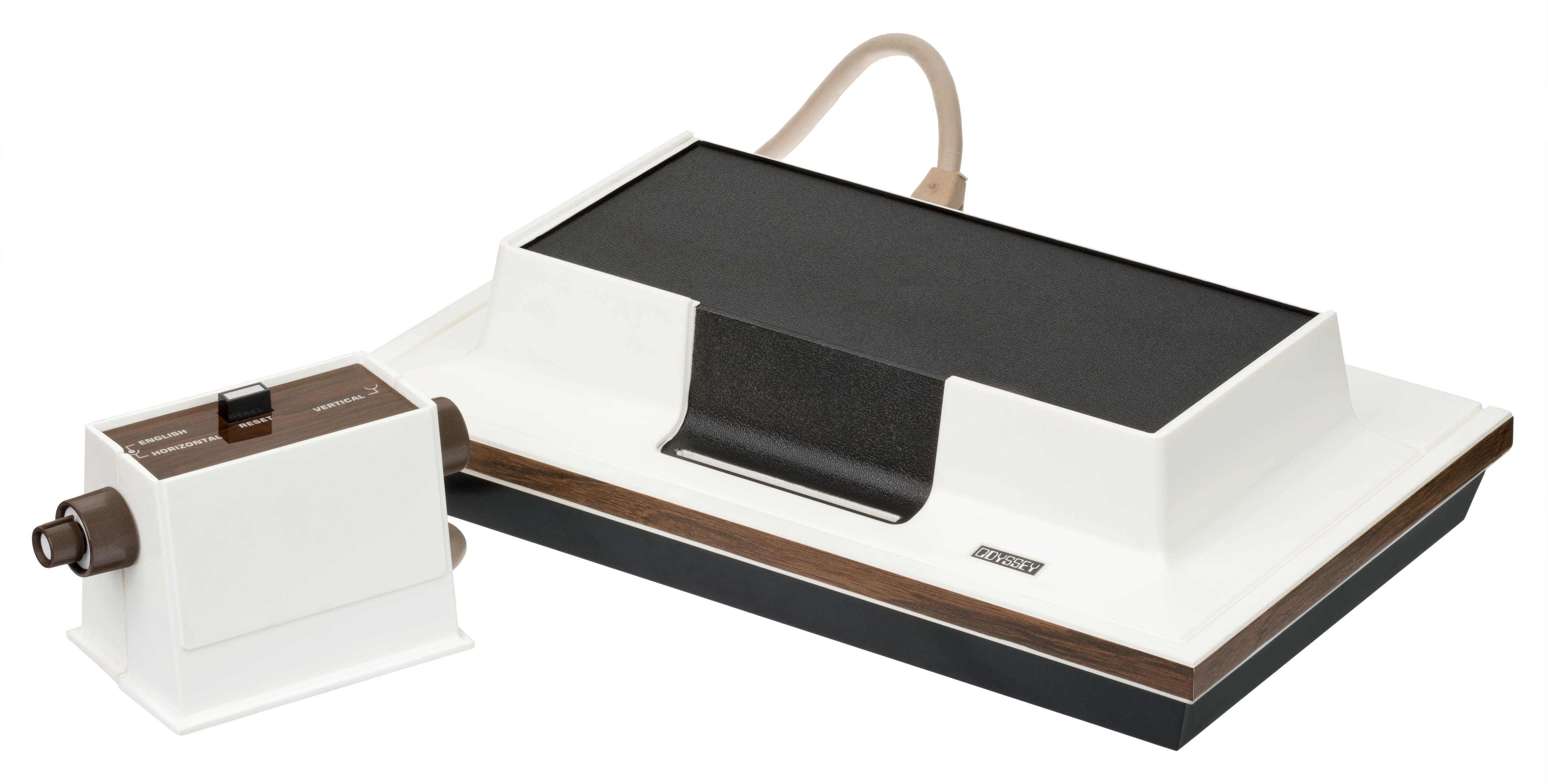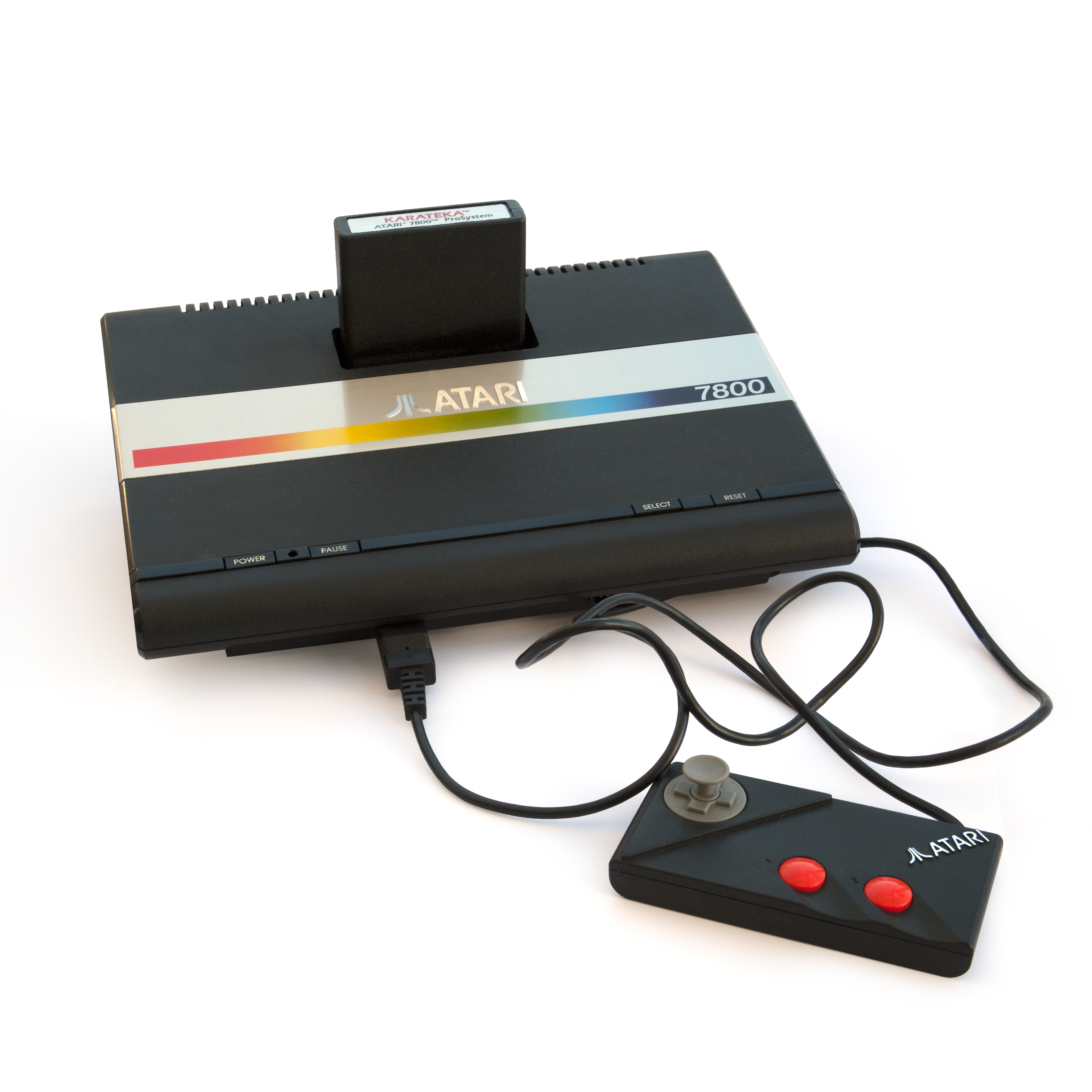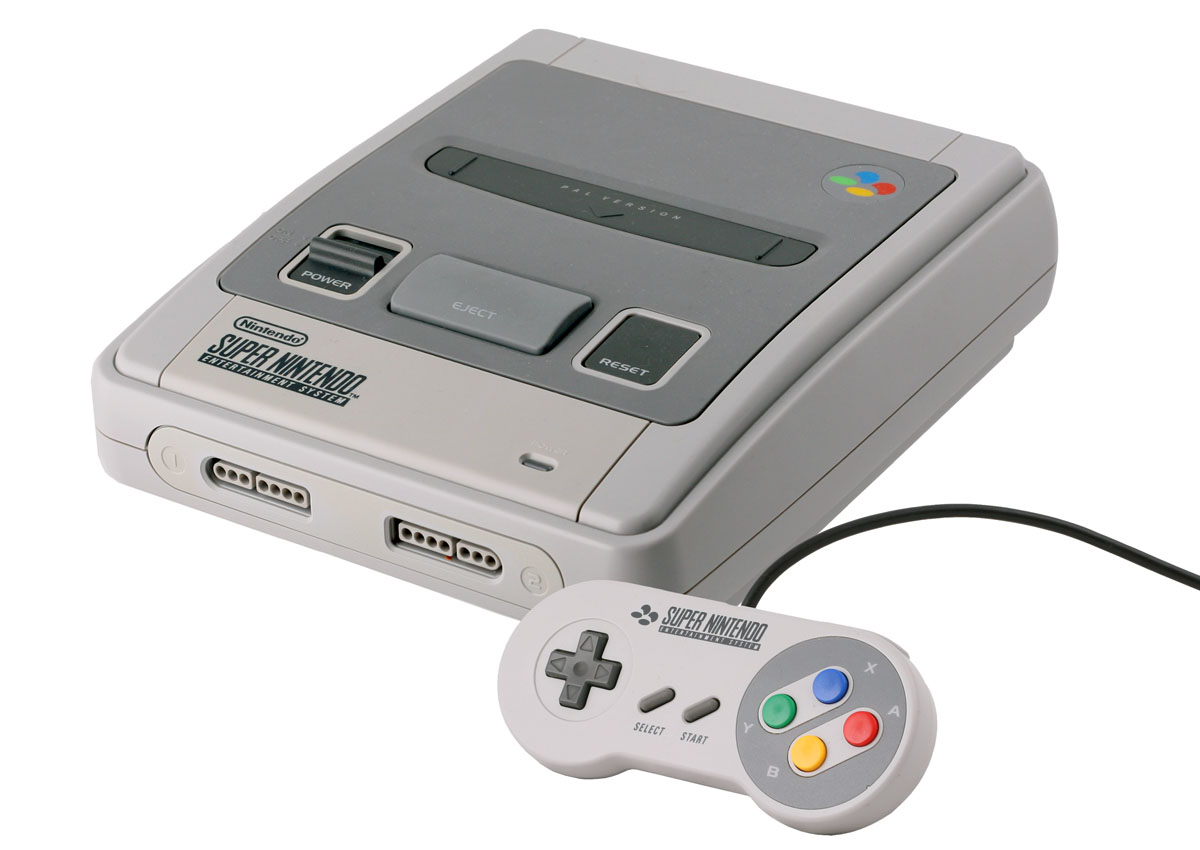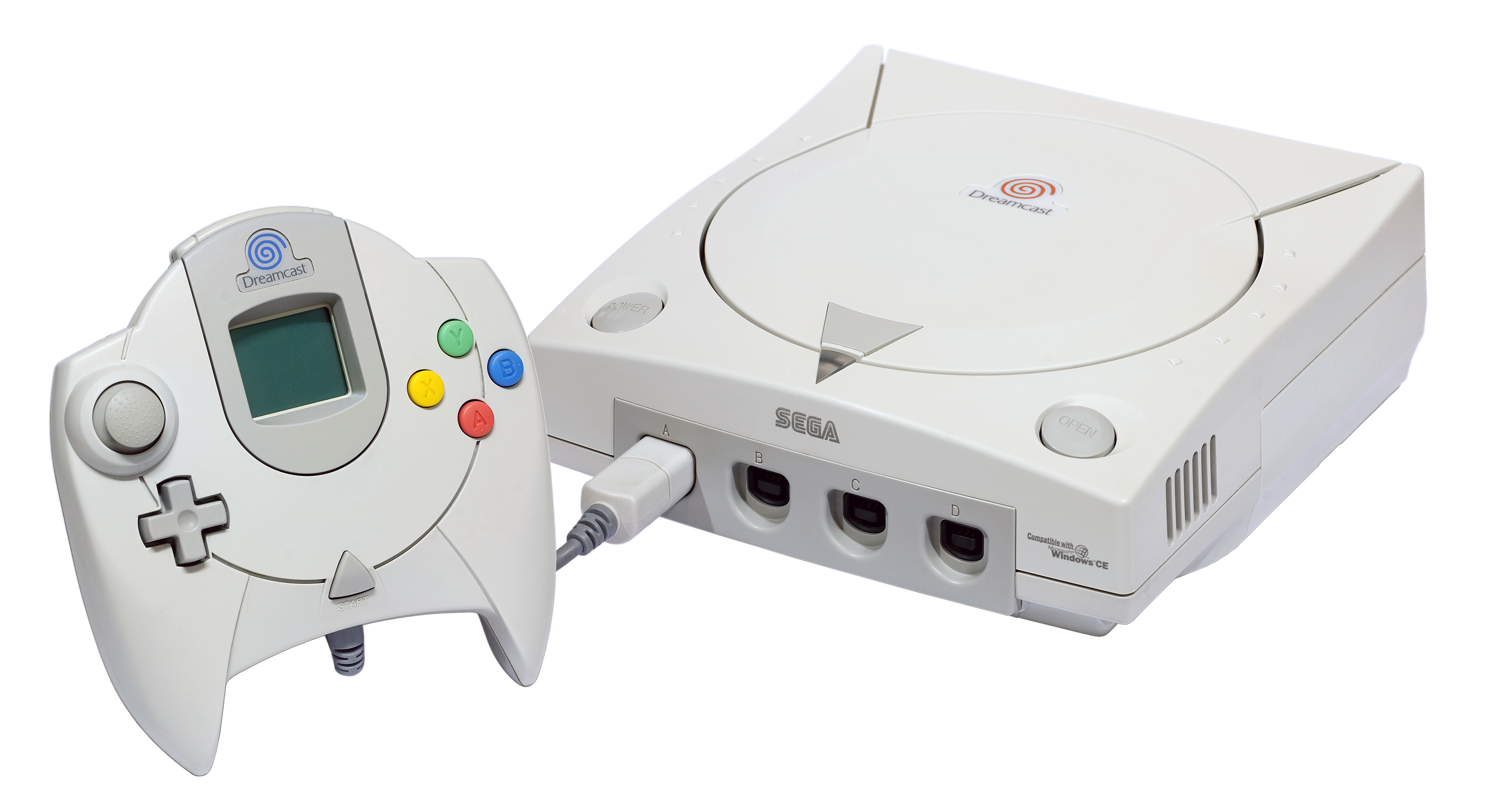
Autumn of
1972 –
With popular arcade games quickly becoming evil money making
scheme to retrieve a child well-earned quarters many companies began to create
their own home consoles so consumers would not have to leave the house and keep
some of their quarters intact. To start off the console war that would dominate
the next 40 plus years, the first console to be released to the public was the
Odyssey by Magnavox in the late stages of 1972. The Odyssey brought arcade
games to the living room with some of the graphics taken away. The Odyssey used
game cartridges to transport the game to the home, a total of 12 cartridges
were sold for this console some having multiple games on them and some games
being on two different cartridges. In total there were 27 games made for this
console all with very basic graphics.
 1975 - With the popularity of the home console market growing many new companies began their attempt to get some of the profit away from Magnavox. Sear began to sell the very first Atari Pong system under the label Tele-Games. This would mark the beginning of a partnership between the two companies where Sears would sell games under various labels which were designed by Atari. In the early part of 1976 Atari would release their own version of the Pong system. As well as Atari getting in on the console war Magnavox also released an updated version of their Odyssey to try and keep up with the hardware advances. These new home consoles would start a new industry that would span for the next 50 years and becoming bigger than many other industries that were profitable.
1975 - With the popularity of the home console market growing many new companies began their attempt to get some of the profit away from Magnavox. Sear began to sell the very first Atari Pong system under the label Tele-Games. This would mark the beginning of a partnership between the two companies where Sears would sell games under various labels which were designed by Atari. In the early part of 1976 Atari would release their own version of the Pong system. As well as Atari getting in on the console war Magnavox also released an updated version of their Odyssey to try and keep up with the hardware advances. These new home consoles would start a new industry that would span for the next 50 years and becoming bigger than many other industries that were profitable.
1976-
 In 1976 many companies began to realize the potential of the consoles in people’s homes. Many companies developed consoles such as Coleco with the Telstar, Fairchild Semiconductor with the Channel F, Universal Research Labs with the Video Action III (There was no Video Action II but the Video Action I was released in the earlier year) and GHP with the Wonder Wizard. Atari and Magnavox also released updated versions of their consoles with the Atari Super Pong Ten and the Odyssey 300. All these consoles were around the same graphic standards and the hardware was mainly the same with no real advances since the last set of console released.
In 1976 many companies began to realize the potential of the consoles in people’s homes. Many companies developed consoles such as Coleco with the Telstar, Fairchild Semiconductor with the Channel F, Universal Research Labs with the Video Action III (There was no Video Action II but the Video Action I was released in the earlier year) and GHP with the Wonder Wizard. Atari and Magnavox also released updated versions of their consoles with the Atari Super Pong Ten and the Odyssey 300. All these consoles were around the same graphic standards and the hardware was mainly the same with no real advances since the last set of console released.
1977-78-
 In 1977 a
few more new consoles came out such as the Studio II from RCA, the Bally
Professional Arcade (later renamed the Astrocade) and the Colour TV Game from
Nintendo. This was Nintendo’s first attempt at making it in the home
entertainment industry which not as well the NES that would come out next
decade. Many companies released updated consoles with newer hardware and better
graphics. Magnavox also released the Odyssey 2 which was another updated
version of the Odyssey video console. Coleco also released many different
versions of their Telstar console releasing 6 consoles in the 2 years. APF also released the APF – M1000 in
1978 but didn't break banks with their product. Atari seemed to follow the lead
of Coleco when the released 5 versions of their console as well. Although these
were different consoles they only had on game on them meaning the consumer had
to buy different consoles to gain the different games. During this time Atari
released their most iconic console, The Atari 2600 this would become the
longest running console in video game history. This started a pinnacle of games
as home entertainment systems started to have colour in there games and local
multiplayer came in to play with many people able to play the games with
different controllers. These consoles would be continued to be updated till the
games industry crash in 1983 where Nintendo would lead the industry out of the
darkness with their most iconic console as well.
In 1977 a
few more new consoles came out such as the Studio II from RCA, the Bally
Professional Arcade (later renamed the Astrocade) and the Colour TV Game from
Nintendo. This was Nintendo’s first attempt at making it in the home
entertainment industry which not as well the NES that would come out next
decade. Many companies released updated consoles with newer hardware and better
graphics. Magnavox also released the Odyssey 2 which was another updated
version of the Odyssey video console. Coleco also released many different
versions of their Telstar console releasing 6 consoles in the 2 years. APF also released the APF – M1000 in
1978 but didn't break banks with their product. Atari seemed to follow the lead
of Coleco when the released 5 versions of their console as well. Although these
were different consoles they only had on game on them meaning the consumer had
to buy different consoles to gain the different games. During this time Atari
released their most iconic console, The Atari 2600 this would become the
longest running console in video game history. This started a pinnacle of games
as home entertainment systems started to have colour in there games and local
multiplayer came in to play with many people able to play the games with
different controllers. These consoles would be continued to be updated till the
games industry crash in 1983 where Nintendo would lead the industry out of the
darkness with their most iconic console as well.
1983 –
In 1983 the video games industry took a major hit in North
America although the new Nintendo Entertainment System was released in Japan,
because of the crash America would not see it till two years later. The new
Nintendo system took gaming to a whole new level and gave developers new
methods of creating games. Cinematronics debut Rick Dyer’s Dragon Lair, the
first video to feature laser-disc technology. The Commodore 64 is introduced;
this was the most powerful video games console to date and the least expensive.
As Atari controls such a bit proportion of the market in the U.S the NES is set
to come out at a later time period, plans were made for it to be distributed by
Atari but these plans fell through and Americans see the NES in 1986.
1985 – 1986 –
 In 1985 the popular
game Tetris was developed by Russian programmer Alex Pajitnov, this was to be
played on the PC for the time being as the games consoles of the time could not
handle the major block drop. In 1986 the NES is released to the whole of the US
after being test-marketed in New York. To compete with the NES, Sega introduces
the Sega Master System (SMS) to the market and Atari release their Atari 7800
to try and keep themselves in the market. With the NES coming out the most iconic game figure came
into play with the very first game released on the NES being Super Mario.
In 1985 the popular
game Tetris was developed by Russian programmer Alex Pajitnov, this was to be
played on the PC for the time being as the games consoles of the time could not
handle the major block drop. In 1986 the NES is released to the whole of the US
after being test-marketed in New York. To compete with the NES, Sega introduces
the Sega Master System (SMS) to the market and Atari release their Atari 7800
to try and keep themselves in the market. With the NES coming out the most iconic game figure came
into play with the very first game released on the NES being Super Mario.
1989 –
Nintendo releases the handheld game console the Game Boy for
$109 this was the first handheld console to be released in the US this is to be
later followed by the Atari Lynx this was a coloured handheld console which
sold for $149. NEC released the first 16-bit console in the U.S. It was called
the TurboGrafx-16 and sold for $189. This was the first system to have video
games run on compact discs which would lead a revolution in gaming and many
future gaming consoles would follow its lead although at first it was seen as
something that would not catch on. The true American experience can to the
American household when Sega debuts the Genesis, its first 16-bit home game console,
for $295. These hand held consoles would prove very popular with gamers all
over the world with the ability to take a game with you at all times made these
first handhelds a must have for all gamers.
1991- 1994
–
 In 1991 the Super NES is released in the US by Nintendo for
$249.95 this was put out to compete with the Sega Genesis with its lower price
but same style graphics meaning this was a hit sale for Nintendo in the US.
Atari releases the Jaguar, attempting to be the first 64-bit console on the
market. The product actually only run two 32-bit processors. Senators Joseph
Lieberman launched a Senate investigation into violence in video games, hoping
to initiate a ban on violent video games. From this senate investigation, the
Entertainment Software Rating Board is created. Ratings are now given to video
games and are marked on the games’ packaging to indicate the suggested age of
players and violent content. Through all of this the Sega Saturn and the Sony
PlayStation make their debut in Japan.
In 1991 the Super NES is released in the US by Nintendo for
$249.95 this was put out to compete with the Sega Genesis with its lower price
but same style graphics meaning this was a hit sale for Nintendo in the US.
Atari releases the Jaguar, attempting to be the first 64-bit console on the
market. The product actually only run two 32-bit processors. Senators Joseph
Lieberman launched a Senate investigation into violence in video games, hoping
to initiate a ban on violent video games. From this senate investigation, the
Entertainment Software Rating Board is created. Ratings are now given to video
games and are marked on the games’ packaging to indicate the suggested age of
players and violent content. Through all of this the Sega Saturn and the Sony
PlayStation make their debut in Japan.
1995 –
Sony bring the PlayStation to the US with the success of the
technology in Japan Sony wanted to capitalise on their profits so introducing
the PlayStation to the US was the best solution. Nintendo releases the Nintendo
64 in Japan although the Americans would not see this console till later the
console became an instant success within the gaming community. This console
would bring some of the best games in the history of Nintendo. This console
would also bring along feature such as getting feedback through the controller
when the rumble pack was introduced.
1996 –
Arcades
start to bring in “ride-and-video” games like skiing and snowboarding these
were implemented because their popularity had risen above the fighting and
shooting games. Interaction games became very popular in the arcades and many
more would be developed and would overtake the machines that only had buttons
for fighting or shooting. Atari’s founder, Nolan Bushnell, renters the industry
making Internet stations for arcades and bars. The Tamagotchi virtual pet
becomes an instant success in Japan and it was released in the US in May the
same year selling all of its 30,000- unit supply in 3 days these were to be
constantly popular throughout the next few year even some school began to ban
some the Tamagotchi’s from the class room as it would disturb lessons.
1997 – 2000 –
 PlayStation
is thought to be the best selling console of all time selling its 20 millionth
unit in 1997. Tiger produces a multipurpose handheld to complete with the Game
Boy. Called the game.com, it played games but also had an address book,
calculator, and stylus for touchscreen capability. It connects to the PC modem
for access to e-mail. Arizona tries to restrict violent video games trying to
make it illegal to display violent material to minors. These attempts fail
dramatically. In 1998 Sega introduces the Dreamcast to Japan the console
operated on Windows CE which allowed easy conversions between Dreamcast and PC
games. Wal-Mart also decides to ban over 50 video games that they deem them
inappropriate for minors. In 1999 Billy Mitchell attained a score of 3,333,360
in the game Pac-Man. The highest possible score a player can get. Also in this
year because of the shooting in Columbine High School, Sega announces they will
not be releasing their light gun to the US which meant the US had to play the
popular House of Dead 2 using a standard controller. In 2000 Sony released the
PlayStation 2 and it quickly sold out upon launch only 500,000 units were
available on the first day of release making it hard to obtain one straight
away. The Sims was released in the US and quickly become a hit.
PlayStation
is thought to be the best selling console of all time selling its 20 millionth
unit in 1997. Tiger produces a multipurpose handheld to complete with the Game
Boy. Called the game.com, it played games but also had an address book,
calculator, and stylus for touchscreen capability. It connects to the PC modem
for access to e-mail. Arizona tries to restrict violent video games trying to
make it illegal to display violent material to minors. These attempts fail
dramatically. In 1998 Sega introduces the Dreamcast to Japan the console
operated on Windows CE which allowed easy conversions between Dreamcast and PC
games. Wal-Mart also decides to ban over 50 video games that they deem them
inappropriate for minors. In 1999 Billy Mitchell attained a score of 3,333,360
in the game Pac-Man. The highest possible score a player can get. Also in this
year because of the shooting in Columbine High School, Sega announces they will
not be releasing their light gun to the US which meant the US had to play the
popular House of Dead 2 using a standard controller. In 2000 Sony released the
PlayStation 2 and it quickly sold out upon launch only 500,000 units were
available on the first day of release making it hard to obtain one straight
away. The Sims was released in the US and quickly become a hit.
2001 – 2004 –
Microsoft and Nintendo introduce there next generation of
consoles being the GameCube for Nintendo and the Xbox for Microsoft. The
GameCube was easier to develop for but the Xbox offered better graphics for
developers to work with. Sega announces they will no longer be manufacturing
hardware. And Nintendo releases the Game Boy Advance, a portable gaming system.
These entire new consoles came on leaps and bounds from the last generation of
console and graphics and physics in a game became much more realistic.
2005 – 2007 –
 Sony releases the PSP to compete with the Game Boy and Nintendo
the PSP offered a large high-resolution display so that developers could bring
gaming that would be seen on a console into the portable setting. In the same
year Microsoft unveils the Xbox 360 to be released in the November of 2005.
Sony and Nintendo’s competing consoles are planned to be released in 2006.
These consoles brought even better graphics to the gaming community makes games
even more breath taking and realistic. This would lead to many new and
interesting games as the new hard ware could withstand the harsh treatment of
the new and improved graphics would lead to more intricate games which will
span a life time.
Sony releases the PSP to compete with the Game Boy and Nintendo
the PSP offered a large high-resolution display so that developers could bring
gaming that would be seen on a console into the portable setting. In the same
year Microsoft unveils the Xbox 360 to be released in the November of 2005.
Sony and Nintendo’s competing consoles are planned to be released in 2006.
These consoles brought even better graphics to the gaming community makes games
even more breath taking and realistic. This would lead to many new and
interesting games as the new hard ware could withstand the harsh treatment of
the new and improved graphics would lead to more intricate games which will
span a life time.
2007-2013
–
 In 2008 Grand Theft Auto 4 breaks sales records in its first
week of sales after gamers bought more than 6 million copies this was a sequel
to the popular GTA3 and the new game brought new characters, setting and story
lines. Through the course of the next couple of years many games would get
bigger and better than ever such games as Battlefield 3 and Call of Duty
brought the soldier to the house hold. By this point in time the games industry
was a huge deal and to break into the profit making side of it. Any original
concepts for games will have not done very well when it came to making a
profit. In 2013 the next generation of consoles were introduced. Nintendo
released there Wii U and Microsoft and Sony revealed their consoles that were
to be sold later in that year. These new consoles are to bring even better graphics
that the prior generation could not handle.
In 2008 Grand Theft Auto 4 breaks sales records in its first
week of sales after gamers bought more than 6 million copies this was a sequel
to the popular GTA3 and the new game brought new characters, setting and story
lines. Through the course of the next couple of years many games would get
bigger and better than ever such games as Battlefield 3 and Call of Duty
brought the soldier to the house hold. By this point in time the games industry
was a huge deal and to break into the profit making side of it. Any original
concepts for games will have not done very well when it came to making a
profit. In 2013 the next generation of consoles were introduced. Nintendo
released there Wii U and Microsoft and Sony revealed their consoles that were
to be sold later in that year. These new consoles are to bring even better graphics
that the prior generation could not handle. 




1976: In case you want to correct it... There actually was a Video Action II. Pong-Story.com has/had one: http://www.pong-story.com/url.htm
ReplyDeleteBut really, read the blog below's full story on the Video Action series:
http://allincolorforaquarter.blogspot.com/2013/11/urls-video-action-first-us-consumer.html